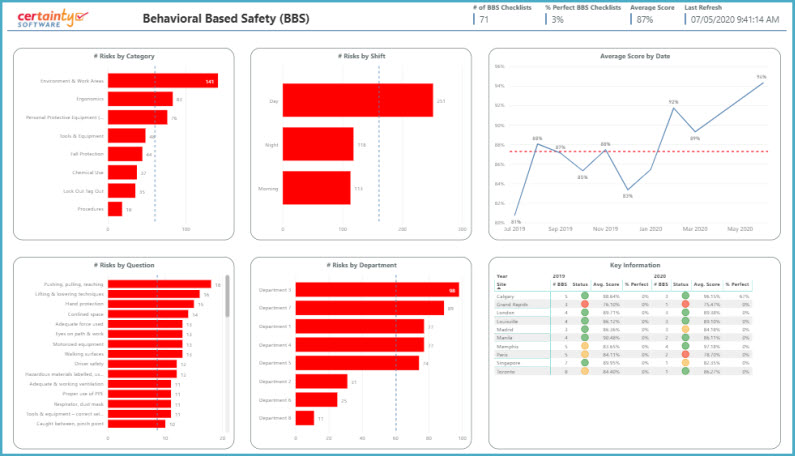In this blog series, we will explore what impact technology will have on your BBS program. We have spoken with industry professionals Joseph Braun, EHS Manager at Ferrara Candy Company; John Peoples, Global EHS Manager at Huntsman Corporation; and Chad Rasmussen, EHS Manager at Cardinal Health to get an insider look on how to manage an effective Behavior Based Safety management program.

There are many tools and resources out there that claim to help develop and implement Behavior Based Safety programs, but how do you know which to use? There are many factors to consider when choosing what tools and resources might be the most useful for your goals, we have asked some industry professionals what THEY think are most important to consider.
BBS Data Consistency
Consistency is the name of the game for John Peoples, Global EHS Manager at Huntsman Corporation, “Consistent use of the same form, easy access, and something that can be site-specific”. This is something easily overlooked when creating large-scale, multi-site, multi-national, safety programs, and forms. You cannot infer meaningful information from datasets if there is no consistency between them. Consistency can mean a lot of things. Does your safety program make sense to everyone, regardless of language barriers? Can you produce safety materials in multiple languages to unnecessarily avoid putting people at risk based on their culture or dialect? Consistency – getting the same form into everyone’s hands – will be a huge step in improving the safety environment of your entire organization.
Instant BBS Data
Instant Data is a big factor for Joseph Braun, EHS Manager at Ferrara Candy Company. With new technologies available, workers no longer must fill out observations on paper and mail them to the right directory, or hand them off to someone to painstakingly punch into an Excel file. “Collecting and analyzing data that was once all done by hand and on paper.” Joe says, “being able to now instantly collect and form plans from the data is a huge benefit”. With app or digitally-based safety observation forms, data can be collected and analyzed instantly, allowing safety officials to make swift and data-informed decisions.

30+ Audit and inspection checklists free for download.
BBS Program Simplicity
Simplicity is a big consideration for Chad Rasmussen, EHS Manager at Cardinal Health “The easier it is to perform the assessments and the easier it is to trend the information the more likely the program is to succeed. A complicated program or form may be all it takes for people to completely reject the safety program. Using a simple, standard, and user-friendly platform to collect BBS observations will give your program a running start. Chad says this is still only a piece of the puzzle, “It will still take a company remaining diligent about people being properly trained and completing the assessments buts, but there will be less work needed to be able to sustain the program.”
Starting with a simple, consistent platform that instantly gives you data-driven results is a big step in the right direction for creating a successful and accepted Behavior Based Safety program.
Check out previous blogs in this series and stay tuned for more!
Why You Should Include Behavior Based Safety in your Safety Management Program
How Do You Measure the Success Of A BBS Program?
Tips To Increase Participation, Buy-In, And The Effectiveness Of Your BBS Program
How to Avoid the BBS ‘Blame Game



